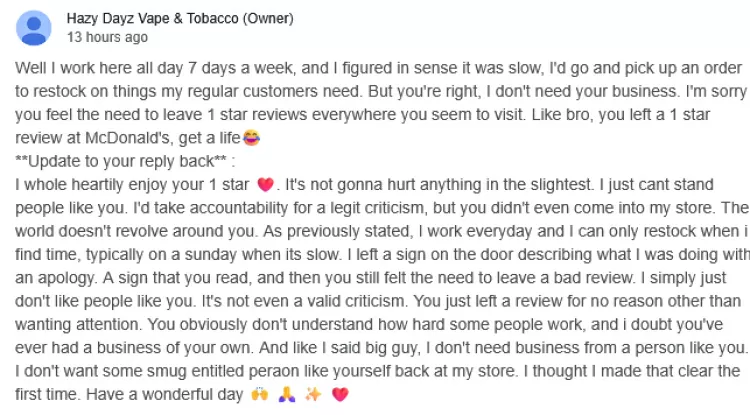podcasting - The basics of getting started

1. Introduction to Podcasting
Podcasts have become increasingly popular in recent years, with millions of people tuning in to their favorite shows on a regular basis. Whether you are a fan of true crime, comedy, news, or self-help, there is a podcast out there for everyone. If you’ve been considering starting your own podcast but are unsure of where to begin, look no further. This article will guide you through the basics of podcasting, from equipment and software to content creation and promotion. Whether you're a beginner or have some experience, this podcast 101 will help you get started on your podcasting journey.
2. Why Start a Podcast?
Starting a podcast can be a rewarding and fulfilling endeavor for a variety of reasons. Let's explore some of the benefits and motivations behind launching your own podcast.
First and foremost, podcasting allows you to share your voice and ideas with a global audience. It provides a platform for you to engage with listeners who are genuinely interested in the topics you discuss. This level of connection and influence is unmatched in other forms of media.
Moreover, podcasting offers a unique opportunity to establish yourself as an expert in your field. It allows you to showcase your knowledge, expertise, and perspective to a dedicated audience. This can open doors to various opportunities, such as speaking engagements, collaborations, and even potential monetization avenues.
Another advantage of starting a podcast is the flexibility it offers. Unlike traditional forms of media, you have complete control over your content, schedule, and format. This means you can produce episodes at your own pace and explore topics that resonate with you and your target audience.
Lastly, the podcasting industry continues to grow at a rapid pace. By getting started now, you position yourself to be part of this exciting movement. As the number of podcast listeners increases, so does the potential for building a strong and engaged community around your show.
In the next section, we will delve into the fundamental steps of setting up your podcast, including equipment and software requirements. Stay tuned to learn more about the practical aspects of getting your podcast off the ground.
3. Choosing the Right Equipment and Software
Choosing the right equipment and software is crucial to ensure the quality and success of your podcast. While it may seem overwhelming at first, there are options available to suit every budget and level of technical expertise.
When it comes to equipment, the three main essentials are a microphone, headphones, and a reliable recording device. Invest in a good quality microphone that captures clear and crisp audio. Consider using headphones to monitor your recordings and ensure optimal sound quality. Additionally, choose a recording device that meets your needs, whether it be a digital recorder, computer software, or a smartphone app.
In terms of software, there are numerous options available for recording, editing, and publishing your podcast episodes. Popular recording software includes Audacity, GarageBand, and Adobe Audition. For editing, you can use programs like Adobe Audition or Hindenburg Journalist. Lastly, platforms like Libsyn, Podbean, and Anchor offer easy-to-use interfaces for publishing and distributing your podcast.
Take the time to research and compare different equipment and software options that best suit your podcasting goals and budget. With the right tools in hand, you'll be well on your way to creating a professional and engaging podcast. Stay tuned for the next section where we will discuss the importance of creating compelling content for your podcast.
4. Planning Your Podcast Content
Planning Your Podcast Content
Once you have your equipment and software ready, it's time to focus on creating compelling content for your podcast. Planning your podcast content is an essential step that will help you stay organized, attract listeners, and keep them coming back for more.
1. Define Your Podcast's Purpose: Start by clearly defining the purpose of your podcast. What topics do you want to cover? What message or theme do you want to convey? Having a clear purpose will help you stay focused and provide direction as you plan your episodes.
2. Research Your Target Audience: Understanding your target audience is crucial for creating content that resonates with them. Take the time to research your audience's interests, preferences, and needs. This will help you determine the type of content they will find valuable and engaging.
3. Plan Your Episode Structure: Decide on the structure and format of your episodes. Will you have guest interviews, solo episodes, or a combination? Consider incorporating segments, such as listener questions or current news updates, to keep your podcast fresh and interactive.
4. Create a Content Calendar: Developing a content calendar will help you stay organized and consistent with your podcast releases. Outline your episode topics and plan ahead for any special episodes or series you want to include. This will also help you schedule interviews or collaborations with guests.
5. Prepare Engaging Episode Titles and Descriptions: Craft catchy episode titles and compelling descriptions that will grab your audience's attention. Your titles and descriptions should provide a sneak peek into what the episode is about and entice listeners to tune in.
Planning your podcast content in advance will save you time and ensure that you consistently produce high-quality episodes. It will also help you maintain audience engagement and attract new listeners. In the next section, we will discuss the importance of recording and editing your podcast episodes effectively. Stay tuned!
5. Recording and Editing Your Podcast
Recording and editing your podcast episodes effectively is crucial for delivering a polished and professional listening experience. While it may seem daunting, with the right tools and techniques, you can easily create high-quality episodes that engage your audience.
1. Choose a suitable recording space: Find a quiet location with minimal background noise to ensure clear audio. Consider using soundproofing materials or blankets to minimize echo and improve sound quality.
2. Use a reliable microphone: Invest in a good-quality microphone to capture clear and crisp audio. A USB microphone is a popular choice for beginners due to its ease of use and affordability.
3. Set up your recording software: Use software like Audacity or Adobe Audition to record your podcast. Familiarize yourself with the functionality and settings to optimize your recording quality.
4. Master the recording process: Before hitting the record button, do a sound check to ensure your audio levels are balanced. Speak clearly and at a consistent volume throughout the episode. Take breaks and edit out any mistakes or long pauses later.
5. Edit and enhance your audio: Use editing software to remove any background noise, adjust levels, and enhance the overall sound quality. Add intro/outro music, transitions, and sound effects to create a professional and engaging listening experience.
Remember, practice makes perfect. Don't be afraid to experiment with different techniques and learn from your mistakes. With time, you'll become more comfortable with the recording and editing process, enabling you to produce top-notch podcast episodes. In the next section, we will discuss the essential steps for publishing and promoting your podcast. Stay tuned!
6. Distributing and Promoting Your Podcast
In order to share your podcast with the world and build an audience, you'll need to distribute and promote it effectively. Here are the essential steps to get started:
1. Choose a podcast hosting platform: A podcast hosting platform is where you'll upload your episodes and generate an RSS feed. Popular options include Libsyn, Podbean, and Anchor. Research and compare different platforms to find the one that suits your needs and budget.
2. Submit your podcast to directories: Submitting your podcast to directories like Apple Podcasts, Spotify, and Google Podcasts is crucial for reaching a wider audience. Each directory has specific submission requirements, so make sure to follow their guidelines while providing all necessary details such as show description, episode titles, and artwork.
3. Create a podcast website: Having a dedicated website for your podcast allows you to provide additional information to your listeners and serves as a hub for all your episodes. Include episode show notes, guest information, and links to social media accounts to engage with your audience further.
4. Implement effective marketing strategies: Use social media platforms, email newsletters, and other marketing channels to promote your podcast. Engage with your audience through regular updates, behind-the-scenes content, and teasers of upcoming episodes. Collaborate with other podcasters or influencers in your niche to cross-promote and expand your reach.
Remember, building an audience takes time and effort. Consistency and quality content are key to attracting and retaining listeners. In the next section, we'll dive into monetizing your podcast and exploring potential revenue streams. Stay tuned!
7. Engaging with Listeners and Building a Following
Once your podcast is up and running, it's important to engage with your listeners and build a loyal following. Here are some strategies to help you foster meaningful connections with your audience:
a. Encourage feedback and interaction: Create opportunities for your listeners to provide feedback, whether it's through email, social media, or a dedicated feedback form on your website. Encourage them to ask questions, share their thoughts, and suggest topics for future episodes. Respond to their messages and comments to show that you value their input.
b. Utilize social media platforms: Social media is a powerful tool for engaging with your audience. Create accounts on platforms like Twitter, Instagram, and Facebook specifically for your podcast. Regularly post updates, behind-the-scenes content, and sneak peeks of upcoming episodes. Interact with your listeners by replying to their comments, sharing listener testimonials, and conducting polls or Q&A sessions.
c. Consider hosting live events or Q&A sessions: Hosting live events or Q&A sessions can help you connect with your audience in real-time. Consider organizing virtual or in-person events where listeners can interact with you and other fans of the podcast. This not only strengthens your connection with existing listeners but also attracts new ones.
d. Feature listener stories or feedback on your episodes: Showcasing listener stories or reading their feedback on your episodes can make your audience feel involved and appreciated. Consider incorporating a segment in your podcast where you share these stories, provide shout-outs, or answer listener questions.
Remember, the engagement and connection you build with your listeners are essential for the success of your podcast. By actively involving your audience and making them feel valued, you can develop a loyal following that will support and promote your podcast. In the next section, we'll explore ways to monetize your podcast and turn your passion into a potential revenue stream. Stay tuned!
8. Tips for Success and Growing Your Podcast
Building a successful podcast takes time and effort, but with the right strategies, you can grow your audience and gain more recognition. Here are some tips to help you reach new heights with your podcast:
a. Consistency is key: Be consistent with your podcast episodes. Choose a schedule that works for you and stick to it. Whether you release episodes weekly, bi-weekly, or monthly, make sure your listeners know when to expect new content. Consistency will help you build trust and keep your audience engaged.
b. Cross-promote with other podcasts or influencers: Collaborating with other podcast hosts or influencers in your niche can help you reach a wider audience. Consider featuring guest hosts or being a guest on other podcasts. This cross-promotion can introduce your podcast to a new set of listeners and attract them to your show.
c. Optimize your podcast for search engines: Just like websites, podcasts can be optimized for search engine visibility. Research relevant keywords related to your podcast topics and incorporate them in your episode titles, descriptions, and show notes. This will increase the chances of your podcast appearing in search results and attracting new listeners.
d. Keep evolving and improving: Regularly listen to your own podcast episodes and take note of areas where you can improve. Consider seeking feedback from your audience and implementing their suggestions. By constantly evolving and improving your content, you will attract more listeners and keep your existing ones engaged.
With these tips in mind, you are well on your way to growing your podcast and achieving greater success. In the next section, we will delve into the various ways you can promote your podcast and reach a wider audience. Stay tuned for more valuable insights!
1. Concept and Planning: a. Define Your Niche: Choose a specific topic or niche for your podcast. It should be something you're passionate about and have knowledge in. b. Target Audience: Identify your target audience. Who are you creating the podcast for? What problems or interests does it address for them? c. Format and Content: Decide on the format (interviews, solo, panel discussions, etc.) and create a content plan. Outline the first few episodes.
2. Research and Content Development: a. Market Research: Look at other podcasts in your niche to identify gaps and opportunities. b. Episode Ideas: Create a list of potential episode topics and guests. c. Script or Outline: Prepare scripts or episode outlines to stay organized during recording.
3. Equipment and Software: a. Microphone: Invest in a good quality microphone (USB or XLR). b. Headphones: Get comfortable headphones for monitoring. c. Audio Interface: If using an XLR microphone, you'll need an audio interface. d. Recording Software: Choose recording and editing software such as Audacity, Adobe Audition, or GarageBand. e. Pop Filter and Mic Stand: These can improve sound quality. f. Room Acoustics: Ensure your recording space has good acoustics to reduce background noise.
4. Recording: a. Find a quiet space to record. b. Test your equipment to ensure everything is functioning properly. c. Record your episodes, following your scripts or outlines. d. Be prepared to do multiple takes and edits to get the best results.
5. Editing: a. Edit your recordings to remove mistakes, background noise, and improve overall audio quality. b. Add intro/outro music, jingles, and sound effects if desired. c. Normalize audio levels.
6. Hosting and RSS Feed: a. Sign up with a podcast hosting platform like Libsyn, Podbean, or Anchor. b. Create an RSS feed, which is essential for distributing your podcast to directories. c. Upload your episodes to your hosting platform.
7. Artwork and Branding: a. Create podcast artwork that represents your show. b. Design a compelling logo and cover art. c. Write a catchy podcast description.
8. Publishing and Distribution: a. Submit your RSS feed to podcast directories like Apple Podcasts, Spotify, Google Podcasts, and more. b. Promote your podcast on social media, your website, and relevant online communities. c. Publish your episodes on a regular schedule.
9. Monetization (Optional): a. Once you have a following, you can explore monetization options like sponsorships, affiliate marketing, or premium content.
10. Community Building: a. Engage with your audience through social media, email newsletters, and listener feedback. b. Consider creating a website or blog to complement your podcast.
11. Continuous Improvement: a. Monitor your podcast's performance through analytics. b. Seek feedback and reviews from listeners to make improvements. c. Stay consistent with your release schedule.
12. Legal Considerations: a. Research copyright and licensing regulations for music, content, and images you use. b. Consider trademarking your podcast name or brand if necessary.
Remember that podcasting takes time and dedication. Building an audience and becoming successful may not happen overnight. However, with persistence, quality content, and effective marketing, your podcast can grow and thrive.
What's Your Reaction?


















